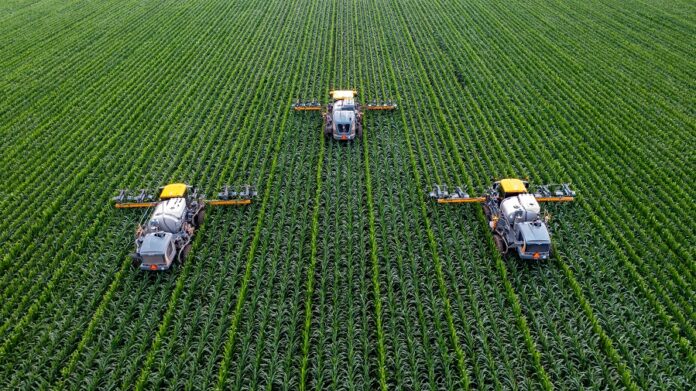A new report published in Nature Food has revealed that by 2050, carbon emissions might be cut to one-fifth of current levels. Fertilizers account for around 5% of all greenhouse gas emissions and their carbon footprint has never been fully estimated.
Two-thirds of fertilizer emissions, according to experts from the University of Cambridge, occur after fertilizer is applied to fields, while the remaining third is caused by production activities.
Although nitrogen-based fertilizers are previously recognized as a significant contributor to greenhouse gas emissions, their complete contribution—from manufacture to application—has never been properly evaluated. According to their estimate, manure and synthetic fertilizers produce more carbon per year than all worldwide shipping and aviation combined or the equivalent of 2.6 gigatons.
However, the requirement for global food security must be weighed against the urgent need to cut carbon emissions from fertilizers. The world’s population is predicted to increase by 20% until 2050, and according to earlier studies, 48% of people are fed by crops farmed using synthetic fertilizers.
According to Cambridge researchers, in order to cut fertilizer emissions while preserving food security, a mix of scalable technology and regulatory solutions is required. The emissions from manure and synthetic fertilizers might, however, be cut by up to 80%, to one-fifth of current levels, without a loss in productivity, according to their estimates, provided such solutions could be applied at scale.
“Incredibly, we don’t actually know how many chemicals we produce globally, where they end up, where and how they accumulate, how many emissions they produce, and how much waste they generate,” said co-author Dr. André Cabrera Serrenho from Cambridge’s Department of Engineering.
Cutting carbon emissions is only one benefit of sustainably producing fertilizers.
As measured by the ratio of food prices to fertilizer prices, fertilizer affordability is at its lowest point since the 2007–2008 food crisis. This decrease in food production, which disproportionately affects smallholder farmers and drives up already high local food prices, also has a negative impact on smallholder farmers’ ability to grow their own food.
For instance, the likelihood of fewer supplies combined with the fall in rice output in 2022, for which Africa is the world’s top importer, is quite concerning.
Over US$710 billion has been spent by nations on social assistance programs for 1 billion people in reaction to the inflation of food, gasoline, and fertilizer costs, including over US$380 billion for subsidies.
But just US$4.3 billion, as opposed to US$507.6 billion in high-income nations, has been spent on social safety programs in low-income nations.
Further urgent measures are needed to rescue hunger hotspots, ease trade, boost the operation of markets, strengthen the role of the private sector, reform harmful subsidies with careful targeting and efficiency, and prevent a worsening of the food and nutrition security problem.
As they react to the crisis, nations should strike a balance between immediate short-term fixes and long-term resilience initiatives.
The World Bank proposes additional urgent measures to rescue hunger hotspots, facilitate trade, enhance the function of markets, strengthen the role of the private sector, and reform and repurpose harmful subsidies with careful targeting and efficiency in order to prevent a worsening of the food and nutrition security crisis.
As they respond to the crisis, nations should strike a balance between immediate short-term fixes and long-term resilience initiatives, the World Bank suggests.



